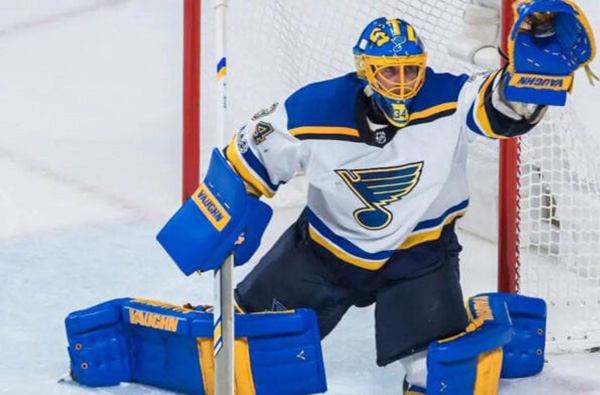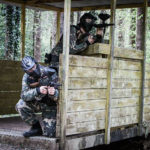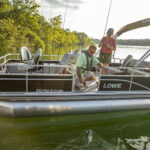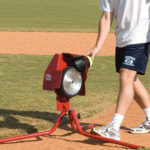ROCKET SPORTS MEDIA | LAVAL, QC. — It only took 12 days at the conclusion of the Canadiens playoff appearance for Marc Bergevin to make a move and get the fans excited. It’s rare to see such enthusiasm for an acquisition of a backup goaltender.
On September 2nd, Montreal acquired Jake Allen and a seventh-round pick in 2022 from St. Louis, in return for a third and seventh round picks in the draft that was held on October 6th and 7th. For those interested in keeping track, the Blues drafted Dylan Peterson in the third round and traded the seventh round pick to the Red Wings that used the selection to draft Chase Bradley.
The buzz is certainly related to the team’s recent failure of finding a suitable backup goalie. In 2018-19, Antti Niemi struggled immensely posting a 3.78 goals-against-average, and .887 save percentage. His poor performance forced Montreal to start Carey Price in 28 of the last 30 games of the season.
Last season, Keith Kinkaid was signed as a free agent to a one-year contract to take on the role. It was a short-lived experiment as Kinkaid was sent to the American Hockey League after posting a 4.24 goals-against-average, and .875 save percentage in six games. Kinkaid played in 13 games with the Rocket before being loaned to the Hurricanes organization to finish the season.
Top Tandem
The Price – Allen duo is the league’s most expensive goalie tandem, totaling $14.85 million, which represents 18.2 percent of the salary cap. Even before playing one game with the Canadiens, Allen was signed to a two-year contact extension which his cap hit will reduce from $4.35-million in 2020-21 to $2.875-million for the following two years.
On paper, the Habs currently have one of the best tandems in the National Hockey League (NHL). When asked, Canadiens goalie coach Stephane Waite didn’t go as far to say that it’s the best in the league, however he said that it’s one of the top duos. Waite named Golden Knights, Bruins, Rangers, Canucks, and Sharks as teams with excellent goalies.
Price Getting Ready
With the NHL still targeting January 1st as the start of the 2020-21 season, Carey Price has adjusted his off-season training calendar accordingly. It’s certainly a busy Price family household as the Carey and wife Angela announced on October 26th the birth of their son Lincoln, the couple’s third child.
Price hit the ice for the first time last week as he usually does in mid-June during a normal off-season. Strength and conditioning coordinator Patrick Delisle-Houde is in weekly contact with Price for an update on the training program.
Price’s performance in the postseason was at an elite level. From all the goalies that played in at least 10 games in the hub cities, Price finished first place with 1.78 goals-against-average, and .936 save percentage.
The Canadiens goalie undoubtedly remains the leader of the team. “You look at Price, his calm demeanor, we feed off that. You have a very high confidence level when you look at him in the back end,” said Brendan Gallagher.
Bergevin has mentioned that during his tenure as the team’s general manager, Price has had no issues with his backup goalie, and that should continue with Allen.
“With close to 300 NHL games under his belt, Jake isn’t a rookie. He brings a lot of knowledge with him, including about players in the Western Conference who he’s faced more often than Carey. Carey loves chatting with and learning from his backup, especially when it’s a veteran who shares a deep knowledge of the League. I know Carey is excited about Jake’s arrival,” explained the goaltending coach.
According to Waite, Price’s best relationships that he’s had with his backups have been with Peter Budaj and Antti Niemi due to the player information that they were able to provide Price.
Allen Stable Backup
Jake Allen is coming off his best statistical season of his seven-year career, posting 2.15 goals-against-average, and .927 save percentage in 24 games with the Blues. In the postseason, he played five games where he recorded 1.89 goals-against-average, and .935 save percentage.
“We rank [goaltenders] as category A, B, or C, and it takes at least a B to be a backup. Jake is in that category; after all, he has nearly 300 starts in the NHL. He could be a starter in plenty of NHL markets. We paid the price, but it’s worth it. I’m extremely pleased to have Jake – he was high on our offseason shopping list,” said an excited Waite. In comparison, Kinkaid has 137 starts in his seven-year NHL career.
“Jake is the type of goalie that doesn’t have a particular quality,” said the goaltending coach. “He does everything well. He’s a goalie that’s always in control, he’s a goalie that without always be outstanding, he will never have low points or really high points, he will always be stable, and consistent, and that’s what I like about him.”
“We bring in a goaltender who can be a starter in this league without doubt and he’s got that pedigree,” said Gallagher. “He’s a guy that we can trust to put in the net a lot more than we probably had around here in the past. He’s a guy that when he’s in there, the expectation is to win hockey games.”
Goalie usage
With the upcoming season expected to be condensed, having a good goaltending tandem will be important for all teams in order to have success. It was a strategy that an increasing number of organizations have been using over the last couple of seasons.
“The scenario for the moment is an 82-game season. And Jake… in an ideal world – because things are never ideal, and surprises always come up; whether it’s injuries, or the timing of the schedule, or a losing streak, or our position in the standings… But in an ideal world, I’d like Jake to play around 30 games,” Waite described his vision.
The Canadiens plan over the last couple of season has been to find a backup that can start 25 to 30 games, but that has never materialized. “It’s not the same preparation now because it’s very demanding. Now games are very tight in the NHL, and if you allow one bad goal, it costs you the game, and that’s a lot of pressure for the goalies,” said Waite on the mental preparation required.
“Carey is now 33-years-old, and his body is slower to recover after each game,” added Waite on the physical aspect. “Carey wants to play all the games, and he will appreciate to play a little less, but have higher quality starts. He will have less corners to cut to preserve his body.”







